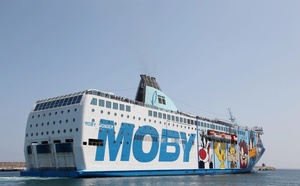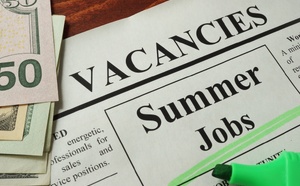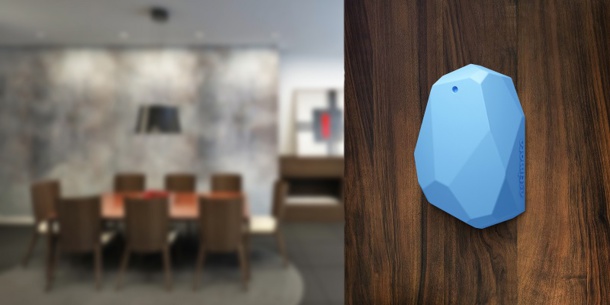
The Beacon is starting to become popular. Tests, enthusiasm and disappointments all follow the shy beginnings to this new technology. (c) Apple et Estimote
“By 2018, we’ll be expecting 60 to 300 million beacons,” hopes Alexander Olelling, co-founder of the German start-up, Sensorberg, that edits the Beacon program.
The number may seem huge since the Beacon has only recently been made available to a general audience.
This technology enables to set up geolocated messages (based on distance, the message received isn’t necessarily the same.)
It works on the Bluetooth Low-Energy (LE), that needs to be activated.
To receive messages, it is necessary to first set-up and turn on the application of the establishment that offers the Beacon.
The iBeacon, developed by Apple and iOS compatible, is a precursor and already available.
But the alternative models that work on Android are still mostly in the developing stage.
The number may seem huge since the Beacon has only recently been made available to a general audience.
This technology enables to set up geolocated messages (based on distance, the message received isn’t necessarily the same.)
It works on the Bluetooth Low-Energy (LE), that needs to be activated.
To receive messages, it is necessary to first set-up and turn on the application of the establishment that offers the Beacon.
The iBeacon, developed by Apple and iOS compatible, is a precursor and already available.
But the alternative models that work on Android are still mostly in the developing stage.
A technology that is still limited
Cédric Chenavier, co-founder of the editor web app A-mano, believes it is a revolution similar to the email: “At first, we’ll be fascinated by everything that this can bring us.
Then, we’ll be annoyed by all the marketing uses and the constant pushing. Finally, just like emails, we’ll end up getting used to it, making a selection, and only reading what is interesting to us.”
For Jean Luc Boulin, Director of the Mission of Tourism Offices and Touristic Regions of Aquitaine (MOPA), that is taking it too far: “The problem is that it is still the beginning phase.
The Beacon is a technology that has not yet been perfected: when we tested it during the encounters of Pau’s Institutional Tourism, to reach all mobiles, a Beacon wasn’t needed, but rather a 3 or 4.
Mariott, the hotel chain, equipped 30 of its hotels with a Beacon, but it is still in the testing phase: the Beacons don’t work well everywhere.”
Then, we’ll be annoyed by all the marketing uses and the constant pushing. Finally, just like emails, we’ll end up getting used to it, making a selection, and only reading what is interesting to us.”
For Jean Luc Boulin, Director of the Mission of Tourism Offices and Touristic Regions of Aquitaine (MOPA), that is taking it too far: “The problem is that it is still the beginning phase.
The Beacon is a technology that has not yet been perfected: when we tested it during the encounters of Pau’s Institutional Tourism, to reach all mobiles, a Beacon wasn’t needed, but rather a 3 or 4.
Mariott, the hotel chain, equipped 30 of its hotels with a Beacon, but it is still in the testing phase: the Beacons don’t work well everywhere.”
Boost consumption without overdoing it
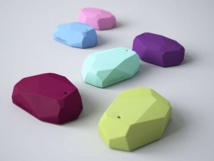
The Beacons of the Estimote Company work with the iBeacons technology (c) Estimote
Another major problem: the question of intrusion.
The fact, as of now, that it is necessary to download an application to receive the messages seems to be both the disadvantage and advantage of Beacon.
Because the downloading of the application is far from being automatic and can thus make the user hesitate. The requirement to download it means that the client has to be looking for this information.
“Having access to the push of Beacons is a voluntary step from our clients,” affirms Maud Bolognes, the referent in the Technology-Information-Communication (TIC) section of the Grand Tourmalet Tourism Office.
“We have set up the Estimote iBeacons and put online the application of the ski resort right before the holidays.Today, we’re counting 174 downloads on Android and iOS.
The messages sent are there to inform people, but also to boost consumption. When the thermal spa offers happy hour, we send push notifications on the phones. We’re even working on a Beacon giveaway project!”
The fact, as of now, that it is necessary to download an application to receive the messages seems to be both the disadvantage and advantage of Beacon.
Because the downloading of the application is far from being automatic and can thus make the user hesitate. The requirement to download it means that the client has to be looking for this information.
“Having access to the push of Beacons is a voluntary step from our clients,” affirms Maud Bolognes, the referent in the Technology-Information-Communication (TIC) section of the Grand Tourmalet Tourism Office.
“We have set up the Estimote iBeacons and put online the application of the ski resort right before the holidays.Today, we’re counting 174 downloads on Android and iOS.
The messages sent are there to inform people, but also to boost consumption. When the thermal spa offers happy hour, we send push notifications on the phones. We’re even working on a Beacon giveaway project!”
When will the Beacon be automatic?
Many are testing the Beacon technology in France, like Sète’s Tourism office.
For example, the startup Smartapps offers a comprehensive iBeacon solution to museums wishing to create exhibits.
Smartaccess, a connected box, enables to download the application at the entrance and explains the idea of Beacon. Then, the iBeacons (also of the Estimote brand) are set up and they can then be controlled from a backoffice.
“The success of Beacon will primarily depend on cultural factors,” explains Jean Luc Boulin.
“Advertising promotions sent on mobile devices are very popular in Asia, work well in the United States, but in Europe, they’re not well received at all.
We can be geolocated without downloading an application: for the Beacon to have a true future ahead, it will need to be a native application, already integrated in phones. If not, we’ll see the same problem as the Qr code…
Nobody will download it, so nobody will use it!”
For example, the startup Smartapps offers a comprehensive iBeacon solution to museums wishing to create exhibits.
Smartaccess, a connected box, enables to download the application at the entrance and explains the idea of Beacon. Then, the iBeacons (also of the Estimote brand) are set up and they can then be controlled from a backoffice.
“The success of Beacon will primarily depend on cultural factors,” explains Jean Luc Boulin.
“Advertising promotions sent on mobile devices are very popular in Asia, work well in the United States, but in Europe, they’re not well received at all.
We can be geolocated without downloading an application: for the Beacon to have a true future ahead, it will need to be a native application, already integrated in phones. If not, we’ll see the same problem as the Qr code…
Nobody will download it, so nobody will use it!”








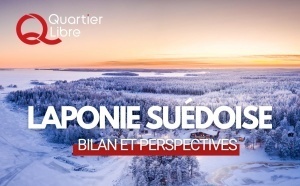





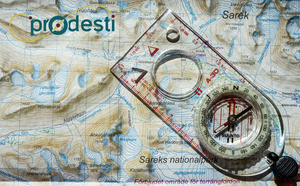







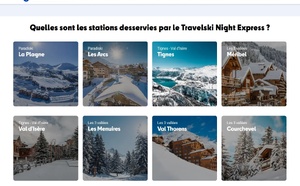
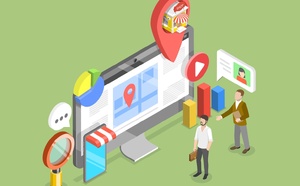


![Tourisme : où sont passés les Chinois ? [ABO] Tourisme : où sont passés les Chinois ? [ABO]](https://www.tourmag.com/photo/art/large_16_9/87929923-62307593.jpg?v=1744721842)

